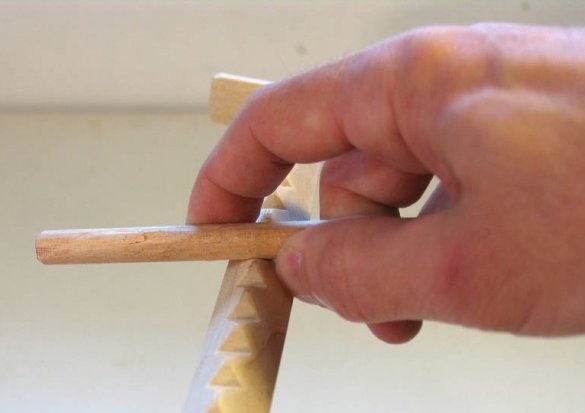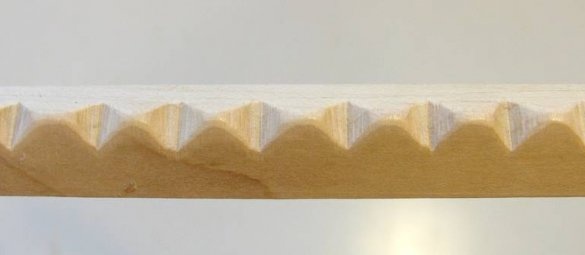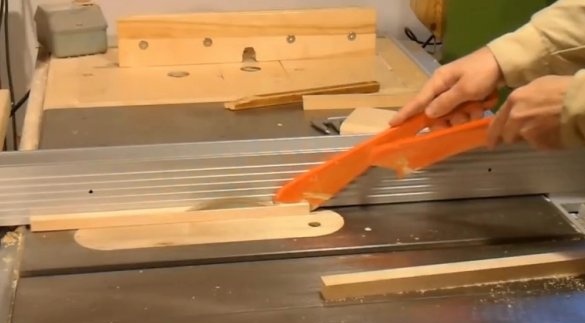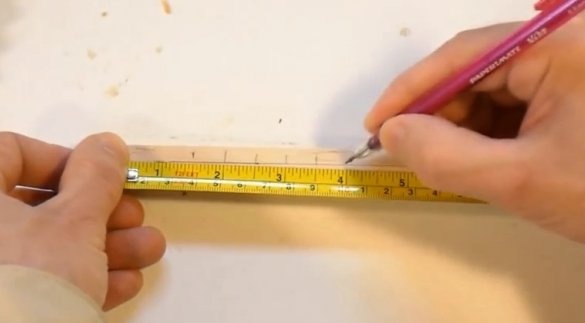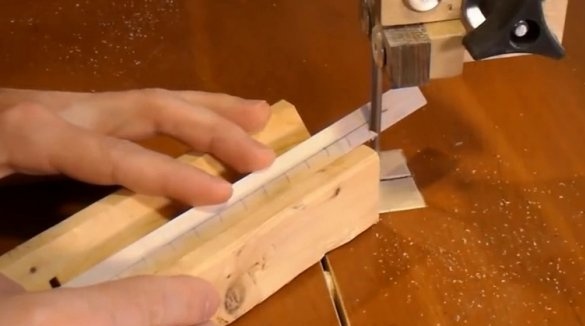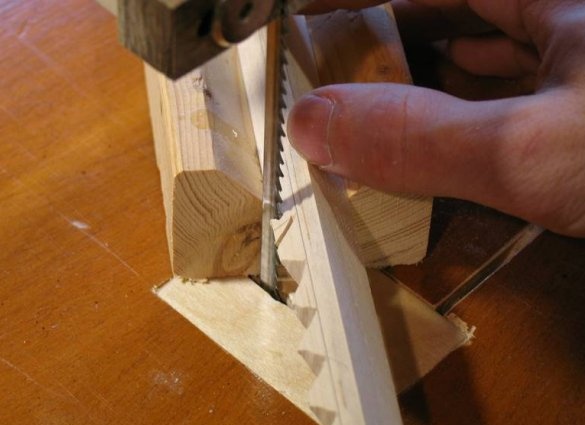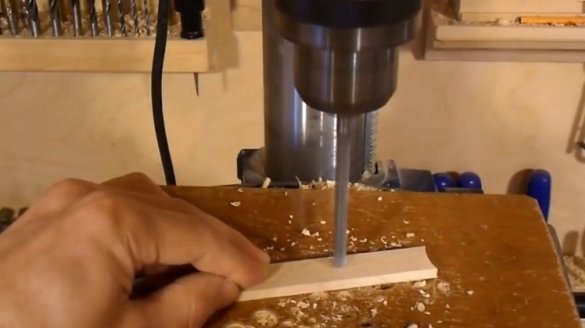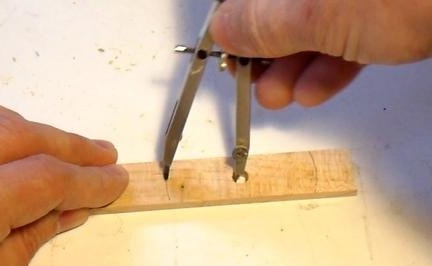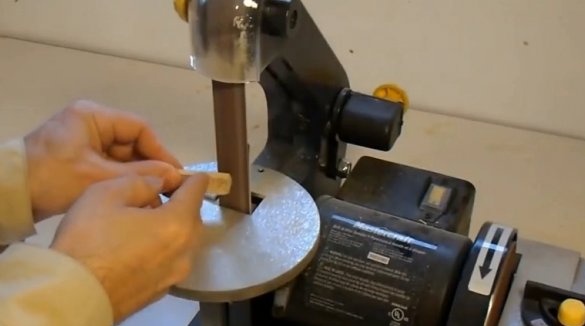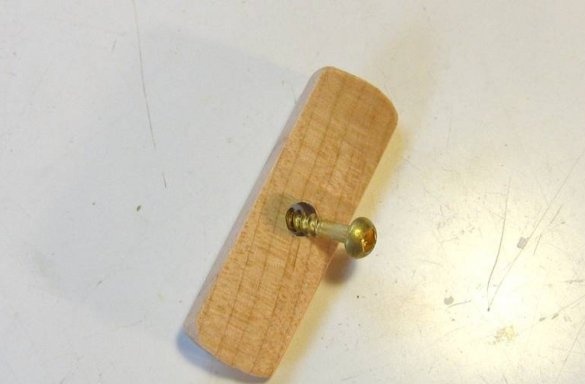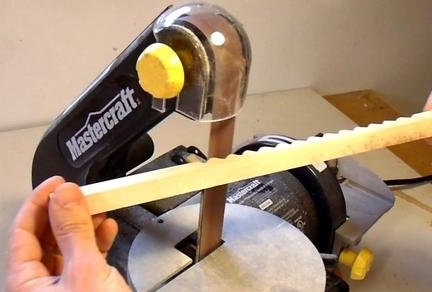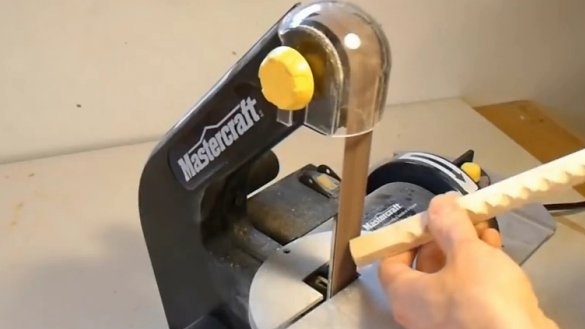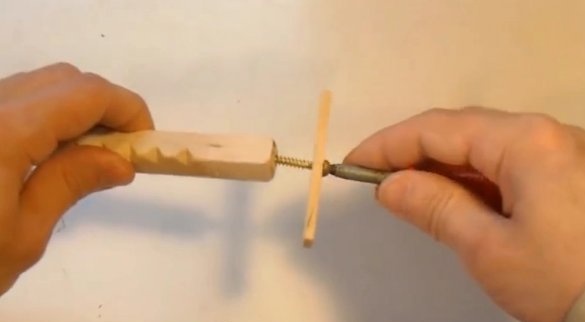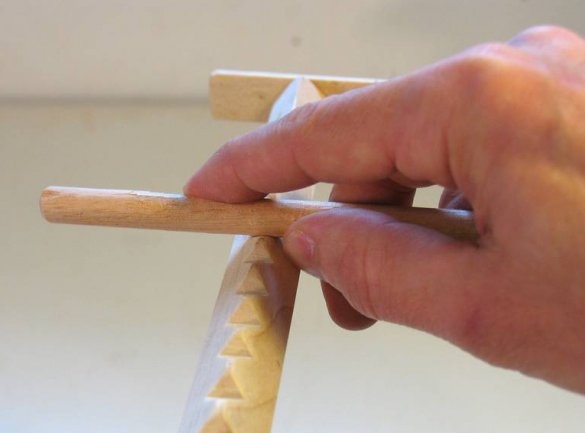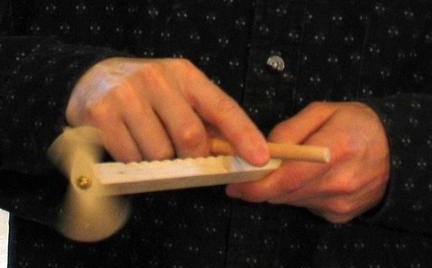From the article below you will learn how to do it yourself make the magic game "The 'Hui' game". The following description and instructions are taken from the Matthias Wandel YouTube channel.
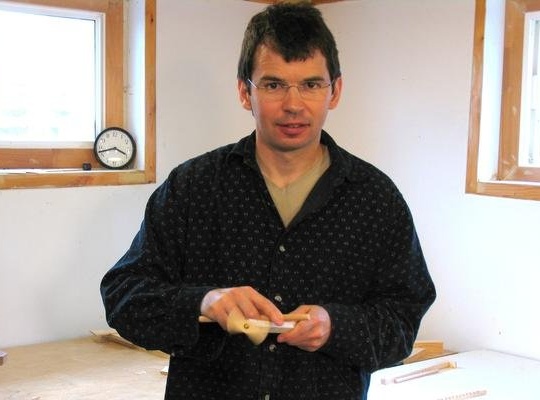
In German, in the original, this toy sounds like "Hui spiel". In English, this is usually called a "hooey stick", but also a "magic propeller stick", "geehaw stick" or "geehaw whimmy dodle".
The game is a fairly simple kind of "magic trick." You need to rub the pin on the rod with the propeller, and the propeller rotates. And when pronounced "Hui" (pronounced huee, but with an emphasis on e), the propeller changes direction.
Then you need to let other people try the same thing. But when they rub the pin against the stick, nothing happens!
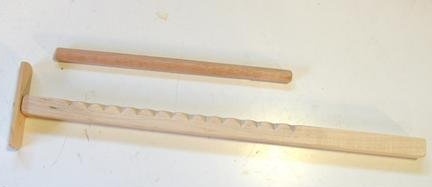
The rod consists only of a stick with recesses cut out on it and a propeller with a screw at the end, plus a pin to rub on these recesses. The trick is how you rub the pin along the stick, and make it so that people cannot see what you are doing.
An explanation of the focus at the end of the article.
Step 1: Materials and Tools Required
- band saw (jigsaw, hacksaw, knife);
- roulette;
- a pencil;
- compass;
- file;
- screw or nail;
- wood waste;
- drilling machine;
- belt sander;
Step 2: Making Huey ...
The most important feature of the rod is a series of notches. The stick has a size of about 14x14 mm and a length of 30 cm. The depth of the notches is about 6 mm, the distance between them is about 13 mm. These sizes do not need to be accurate, but these proportions are most suitable for use. The master placed the notches at a distance of 12 mm from each other, which facilitated their marking using a scale on a tape measure.
The easiest way to cut incisions is to place a stick on a V-shaped block and cut them with a band saw. If there is no band saw, then you can cut them with a knife or saw them with a hacksaw or jigsaw.
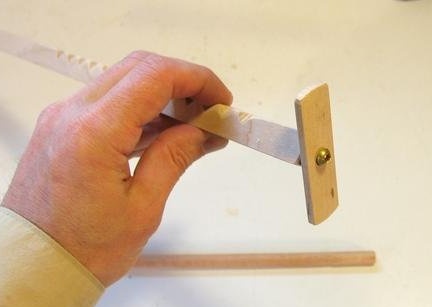
Next, you need to make a propeller ...
The propeller is made of a piece of wood about 2-3 mm thick. The master drilled a 6 mm hole in it. Then with the help of a compass, he outlined the contour of the propeller, and then cut it with a band saw. Thus, you can be sure that the hole is in the middle.
The propeller fits snugly on the screw or nail. The hole dimensions allow maximum backlash without dropping the propeller from the screw. This is a combination of a loosened screw (or nail) and vibration that actually makes it rotate.
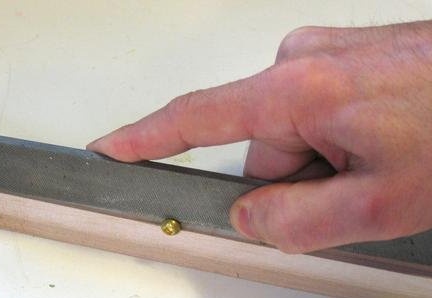
Then, with the help of a file, the master roughens the shank of the screw so that it is easier to control the propeller. The master presses the file with force and rolls the shank from side to side to roll the notch.
Knurled shank
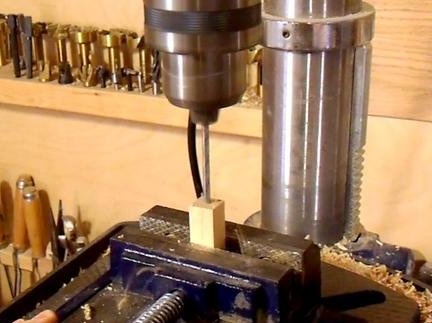
Then drill a hole at the end of the shaft. The size of the hole should be slightly larger than the diameter of the thread. Otherwise, there is a risk of the stick breaking. If the screw does not hold well in the hole, you can always fill the hole with glue before inserting the screw.
When working with the rod, the fingers will touch the edges of the notches, so it is better to smooth them a little. The master uses a belt grinder for this, touching the end of the belt with a rod.
It is also advisable to grind the corners at the ends of the shaft. This will make it more comfortable to hold in the back and will allow the propeller to turn easier in front.
Step 3: How to Manage a Huey (Focus Secret)
Turning the screw in one direction or another depends on how you hold the pin when rubbing it over the notches. The pin should fit snugly against the shaft. Rubbing the pin back and forth, press the fingernail against the slanted side of the stick. This push changes the vibrations in the rod. It is the asymmetry of vibration that gives the propeller a boost. The rod will cause the propeller to rotate counterclockwise.
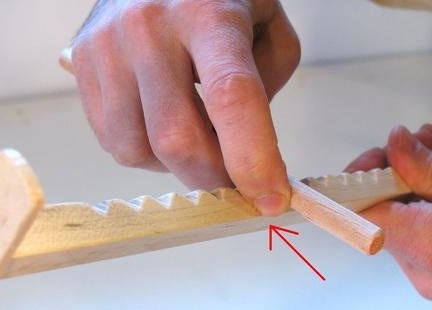
To make the screw rotate clockwise, you must press your finger on the other side of the rod. Reaching with a forefinger to a stick, press a nail to a core. Ideally, you should press the side of the finger from the side of the nail to the shaft.
In order not to give out focus, you must always hold both fingers in their places and press the stick to one or another finger. If you constantly hold your fingers close enough to each other, it is very difficult to say that you are pressing with one or another finger. It turns the action into magic!
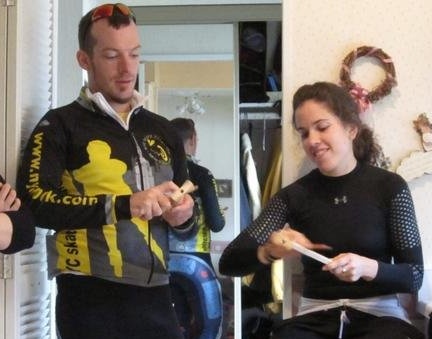
If you liked the magic toy, then try to repeat and make.
Thank you for attention.
See you soon!

